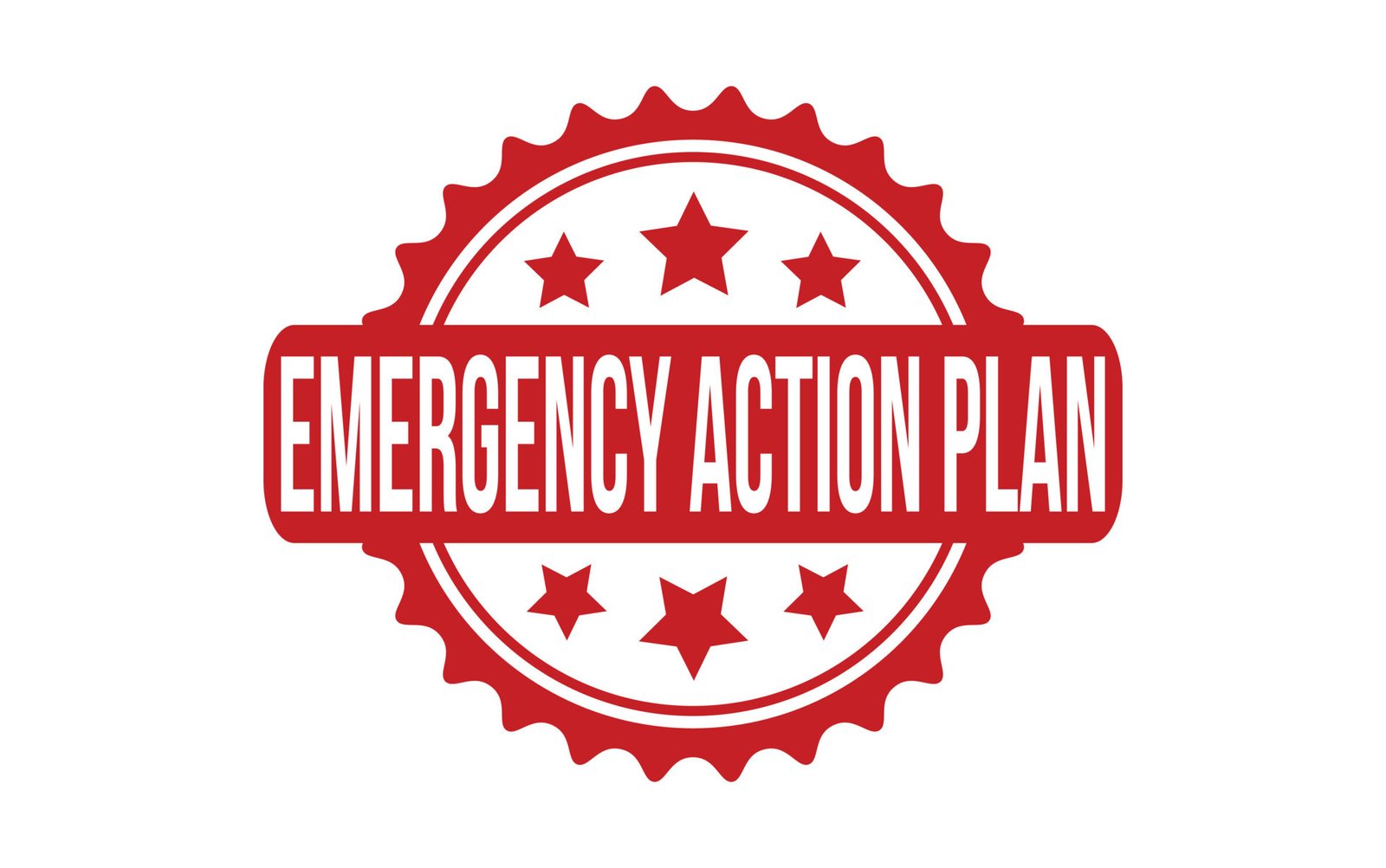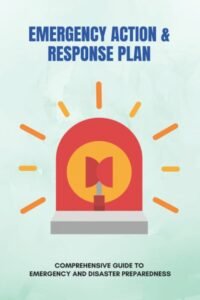Have you ever wondered how you’d react when disaster strikes? For preppers, the idea of an emergency looms large, and having an emergency action plan (EAP) is vital. An EAP isn’t just a checklist but a lifeline, providing the structure and guidance needed during the chaos of an emergency. This blog post will lay out why every prepper needs an emergency action plan, what it should include, and how you can tailor it to suit your personal needs. By the end of this post, you’ll understand the importance of having a solid EAP to ensure your survival and safety.
Post Contents
ToggleUnderstanding Emergency Action Plans
Emergency Action Plans (EAPs) are essential tools that help ensure safety during emergencies. They contain strategies and procedures to follow when facing unexpected events. Developing an EAP involves preparing for a wide range of potential incidents such as natural disasters, fires, or medical emergencies.
Importance of an Emergency Action Plan
Emergencies can happen anywhere and anytime. Having an emergency action plan is like having a roadmap that guides individuals and communities during a crisis. But why is it so crucial?
Firstly, safety is the priority. An EAP clearly outlines steps to take in various emergency situations, greatly reducing risks and confusion. For instance, if there’s a fire, an EAP will show escape routes, assembly points, and designated roles for everyone, ensuring a smooth evacuation.
Secondly, an EAP promotes a state of readiness. By practicing and being aware of the plan, people become more confident and efficient in responding to emergencies. This readiness can save lives and reduce injuries.
Moreover, an EAP is not only about saving lives but also about compliance and legal requirements. According to the Occupational Safety and Health Administration (OSHA), workplaces are legally obligated to have an EAP to ensure the safety of employees. This implies that not having a plan can result in legal penalties.
Creating an EAP also fosters a sense of community and responsibility. When everyone knows their role and works together, it builds a proactive and supportive environment that can handle crises more efficiently.
Lastly, consider the reducing financial losses aspect. Emergencies can be costly in terms of damages and lost work time. A well-thought-out EAP can mitigate these losses by ensuring that responses are swift and organised, minimising business disruptions and property damage.
In summary, the importance of an emergency action plan cannot be overstated:
- Safety First: Clearly defined procedures save lives and reduce injuries during emergencies.
- Readiness: Enables quick, confident responses through drills and awareness.
- Compliance: Legal requirements for workplace safety, as stipulated by OSHA.
- Community: Encourages teamwork and a shared sense of responsibility.
- Financial Protection: Minimises business disruptions and property damage.
Preparing an emergency action plan is a proactive step that ensures we’re ready for unexpected situations, safeguarding lives and property.
Key Components of an Effective Emergency Action Plan
Creating a robust emergency action plan is essential for readiness and safeguarding against unexpected events. Every prepper understands the importance of being prepared, but what exactly goes into a well-crafted emergency action plan? Let’s explore the key components that make an emergency action plan effective.
Risk Assessment and Analysis
The first step in developing an emergency action plan is identifying potential hazards and risks. This involves a thorough process of evaluating various scenarios to understand what can go wrong and how it might impact you and your loved ones.
Here’s how to conduct a risk assessment:
- Identify Risks: Look at your environment and daily activities. What are the natural disasters common to your area? Are there industrial risks, such as chemical spills, that could affect you?
- Analyse Impact: Determine the possible outcomes of these risks. What would be the immediate and long-term effects?
- Prioritise Hazards: Rank the risks based on their likelihood and potential impact. Focus on the most probable or hazardous situations first.
A detailed assessment can make all the difference during an emergency. Remember, it’s not just about recognising the threat, but also understanding its possible fallout.
Emergency Procedures and Protocols
Once risks are identified, it’s crucial to have predefined procedures and protocols to handle various emergencies. This ensures everyone knows what to do, reducing panic and confusion.
Here are some key points for emergency procedures:
- Fire: Establish clear evacuation routes, fire alarm locations, and designated meeting points outside the danger area.
- Natural Disasters: Create procedures for events like hurricanes or earthquakes, including safe zones and essential supplies.
- Medical Emergencies: Have scripts for contacting emergency services, administering first aid, and evacuating the injured safely.
It’s essential to break these steps down into easy-to-follow actions. Knowing the plan inside and out can save lives.
Communication Plan
During an emergency, how you communicate can dramatically alter the outcome. A clear and effective communication strategy is critical.
Consider the following for a solid communication plan:
- Emergency Contacts: Maintain an updated list with contact details for everyone within your network, including local authorities.
- Communication Channels: Decide on primary and backup communication methods (e.g., mobile phones, radios). If the main channels fail, how will you stay in touch?
- Message Clarity: Ensure that the messages you send are concise and clear. Miscommunications in emergencies can lead to dire situations.
A robust communication plan isn’t just about making calls—it’s about relaying precise information swiftly.
Training and Drills
An emergency action plan is only as good as its execution. Regular training and practice drills are indispensable for ensuring every individual knows their role and can act swiftly.
Here’s how to stay prepared:
- Regular Training: Schedule regular sessions where everyone goes over the emergency procedures and protocols. The more often this happens, the better prepared everyone will be.
- Practice Drills: Conduct realistic drills that simulate various emergency scenarios. This helps in identifying potential flaws in the plan and provides valuable practice.
- Feedback and Improvement: After each training or drill, gather feedback and make necessary adjustments. Continual improvement ensures you’re always ready for the worst.
Through practice and repetition, responding to emergencies becomes second nature. When an emergency strikes, there won’t be time to think—only to act.
For further information on developing an emergency action plan, check out OSHA’s guidelines on emergency action plans and The Silver Lining’s tips for emergency planning. These resources offer comprehensive steps and examples that can help you tailor your plan to your specific needs.
Implementing Your Emergency Action Plan
To effectively manage an emergency, having an action plan in place is crucial. But creating the plan is just the beginning. You must also implement and regularly update it to ensure it remains functional and relevant. Let’s explore how to do this in detail.
Review and Update Your Plan Regularly
Your emergency action plan (EAP) should never be viewed as a “set it and forget it” document. Emergencies can evolve, and what worked a year ago might not be effective today. That’s why it’s vital to review and update your plan regularly.
Here are a few reasons why updating your EAP is essential:
Changing Risks: As new threats emerge, your plan should adapt accordingly. For example, new technological risks or changes in the environment can introduce new vulnerabilities.
Staff Changes: People come and go in organisations. New staff may have different skill sets, while departing employees may leave gaps that need to be filled.
Facility Modifications: Any change in the physical workspace, such as renovations or layout changes, must be reflected in the emergency procedures.
To keep your EAP up to date, follow these steps:
Set a Review Schedule: Aim to revisit your plan at least once a year. Mark it on your calendar as a non-negotiable task, like any other critical business requirement. Here’s a useful guide on annual reviews.
Engage Your Team: Make sure all relevant team members are involved in the review process. They can provide valuable insights and highlight gaps you might have missed.
Test and Drill: Regularly scheduled drills can reveal weaknesses in your plan. After-action reviews will help you understand what worked and what didn’t. Consider using resources like OSHA’s guidelines to benchmark your practices.
Update Training: Whenever your EAP is updated, ensure that all employees are retrained according to the new procedures. Training should be ongoing and can range from simple walkthroughs to full-scale simulation exercises.
By keeping your emergency action plan current, you are better equipped to handle emergencies, protect your employees, and minimise potential damage. With these practices in place, you’ll not only comply with safety standards but also foster a culture of preparedness and resilience.
Case Studies: Successful Emergency Action Plans
Understanding how different organisations have successfully implemented Emergency Action Plans (EAPs) can be incredibly helpful. Let’s look at some real-world examples that show how effective planning can make a difference when disaster strikes.
Example 1: FEMA’s Comprehensive Approach
The Federal Emergency Management Agency (FEMA) has a case study library filled with examples of effective emergency action plans. One notable case involves a city that faced severe flooding. FEMA helped the community develop a robust EAP that included:
- Risk assessments: Evaluating which areas were most vulnerable.
- Community involvement: Ensuring everyone knew the plan and their role.
- Frequent drills: Practising the EAP regularly to keep it fresh in everyone’s mind.
This comprehensive approach ensured the community was well-prepared and managed to minimize damage and keep people safe.
Example 2: Rural Health Settings Adaptation
Rural areas often face unique challenges in emergency preparedness. The Rural Health Information Hub shares numerous case studies from rural communities. One such case involved a small hospital in a region prone to wildfires. They developed an EAP that included:
- Evacuation protocols: Clear steps for moving patients quickly and safely.
- Communication systems: Ensuring uninterrupted communication with emergency services.
- Mutual aid agreements: Partnerships with nearby facilities for support during crises.
This proactive planning enabled the hospital to respond efficiently when a major wildfire threatened the area, showcasing the importance of preparedness and collaboration.
Example 3: National Academies Case Studies on Gas Transit Vehicles
The National Academies have compiled case studies centred on emergency response for natural gas transit vehicles. One significant case study featured a major transit authority that developed protocols to handle gas leaks and explosions. Their EAP included:
- Training for personnel: Ensuring staff knew how to handle various emergency scenarios.
- Coordination with first responders: Establishing clear lines of communication and roles.
- Public awareness campaigns: Educating passengers on what to do in an emergency.
These efforts led to a swift and effective response when an incident occurred, highlighting the importance of training and coordination.
Example 4: Global Guardian’s Business Continuity Framework
A business-centric example comes from Global Guardian, focusing on an international company’s efforts to prepare for emergencies. Their emergency action plan included:
- Risk assessments: Identifying potential threats to their operations.
- Crisis management teams: Specialised teams to handle different aspects of the crisis.
- Business continuity plans: Strategies to keep operations running during and after an emergency.
By implementing these measures, the company was able to maintain operations during a significant crisis, demonstrating the value of detailed and forward-thinking planning.
Lessons Learned
These case studies highlight several key lessons:
- Preparation and practice are crucial. Frequent drills and updates to the EAP help ensure everyone is ready when disaster strikes.
- Involving the community or staff in the planning process enhances awareness and cooperation.
- Clear communication and established roles are vital for a coordinated response.
- Tailored plans to specific risks and contexts make an EAP more effective.
Reflecting on these examples can give us a deeper understanding of how to craft our own emergency action plans. Whether we’re planning for a small community or a large organisation, the principles of preparation, communication, and practice remain the same.
Conclusion
Having an emergency action plan (EAP) is crucial for ensuring safety and response readiness during unexpected events. Let’s recap why it’s vital to have a well-structured plan.
Why an Emergency Action Plan is Important
An emergency action plan isn’t just a set of instructions taped to the wall. It’s a living document that prepares you and your household for dealing with emergencies effectively. Having a robust EAP is crucial because it:
Provides Clear Instructions: During an emergency, knowing exactly what to do can prevent chaos and confusion. A clear plan lays out steps for everyone to follow, making actions swift and coordinated. According to the OSHA eTools, well-developed EAPs aid in managing workplace emergencies.
Reduces Panic: Emergencies are stressful, but having a plan in place helps everyone stay calm. When people know their roles and what actions to take, they’re less likely to panic.
Saves Lives and Minimises Damage: The quicker and more effectively you can respond to an emergency, the more likely you are to save lives and reduce damage. Initial actions are vital, as highlighted by Ready.gov, where prompt actions save lives and minimise damage.
Reinforcing the Structure
An effective EAP should be detailed and tested regularly. Here are some key components:
Identify Potential Emergencies: Know the types of emergencies you might face and tailor your plan accordingly. For example, your plan should differ if you’re in a flood-prone area compared to one susceptible to wildfires.
Assign Roles and Responsibilities: Ensure everyone knows their tasks during an emergency. Assigning roles helps distribute actions, ensuring critical steps are not missed.
Create Clear Evacuation Routes: Mark clear, safe pathways for evacuation. Ensure everyone knows these routes and practice them periodically.
Establish Communication Protocols: Knowing how to communicate during an emergency is critical. Have designated methods and contacts to keep everyone informed.
Regular Checks and Updates
Just like you wouldn’t rely on an outdated map, your EAP should be reviewed and updated regularly. Emergencies and environments change, and your plan should evolve to stay relevant. Tips for creating and maintaining effective EAPs are provided by Indeed’s Emergency Action Plan Guide.
An emergency action plan is your key defence against the chaos of unexpected events. By preparing now, you’ll be better equipped to protect yourself and your loved ones when it matters most. Remember, it’s not just about putting words on paper; it’s ensuring those words translate into actions when the time comes.






